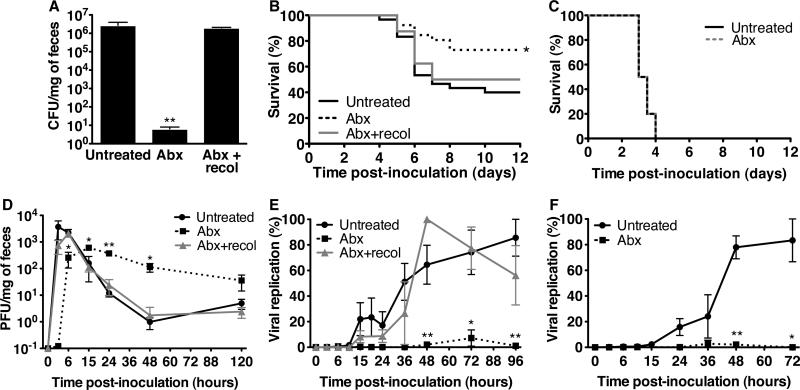Fig. 1.
Poliovirus pathogenesis, shedding, and replication in microbiota-depleted mice. (A) Bacterial loads in feces. PVRtg-Ifnar1-/- mice (n=4-7) were untreated, antibiotic-treated (Abx) for 10 days, or antibiotic-treated for 8 days and recolonized for 2 days with fecal bacteria (Abx+recol). Feces were plated and grown anaerobically, yielding colony-forming units (CFU) per milligram of feces. (B) Survival of PVRtg-Ifnar1-/- mice orally inoculated with poliovirus (untreated: n=30, Abx: n=26, Abx+recol: n=8). *p=0.012, Log-rank test. (C) Survival of PVRtg-Ifnar1-/- mice intraperitoneally inoculated with poliovirus (n=10 mice each). (D) Poliovirus shedding from PVRtg-Ifnar1-/- mice. Mice were orally inoculated with poliovirus, feces were collected (n=2-26 per interval), and poliovirus was isolated and quantified by plaque assay, yielding plaque-forming units (PFU) per milligram of feces. (E,F) Poliovirus replication in intestinal tracts of PVRtg-Ifnar1-/- (E) or PVRtg (F) mice orally inoculated with light-sensitive poliovirus (n=3-9 mice per interval). Feces were harvested, and virus was quantified +/- light exposure to determine percent replication. Symbols represent mean + SEM, *p<0.05, **p<0.01, Student's t-test. N=2-6 for all experiments.

